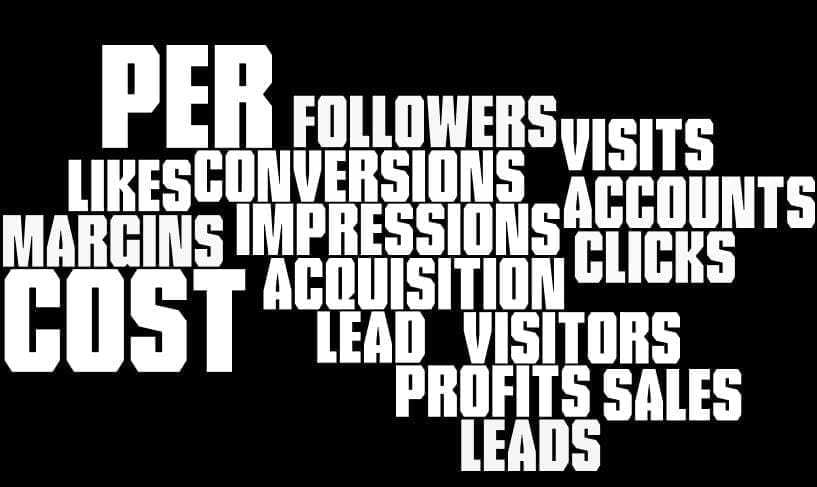Regardless of how big or small your organization is, you’ve got data (sales, financial, customer, CRM, etc.), and you need a structure to inform how you collect or report on the data. This reason needs to be logical and ultimately impact your bottom line as well as multiple departments or individuals within a company.
What is a Digital Analytics Framework?
According to Webster’s dictionary, a framework is the basic or conceptual structure of something. In the case of digital analytics, it is generally the basic structure of applying digital analytics or web analytics to business goals and objectives. This terminology is popular with digital analytics consulting companies and “enterprise businesses,” but severely lacking outside of the industry. Digital analytics consultants such as Semphonic, e-Nor, and Tatvic have clear examples of digital analytics frameworks.
Data and Big Data Aren't Magical

Simply put, data and big data require a “basic structure” to handle them (i.e. a framework). At some point, your business must apply the digital analytics framework within the business. If you’ve started or manage a business without planning, a competitive analysis, research, a structure, or people, then it’s likely that you’re missing a fundamental framework as well. The analytics framework acts as the guiding structure to data, big data, integration, people, and the results (proven by analytics, obviously!). If the information you capture and integrate, the applications or tools to use, and the personnel you hire aren’t based upon a framework, you don’t have a direction!
But Where’s the Value?
When you’ve got a boatload of data all over the place, but no freaking clue as to how or what to pull together, a framework’s value shines through. For many businesses, this is the equivalent of finding $5 in your pants or shirt pocket every morning. It doesn’t sound like much, but it adds up! Here are a few real examples:
Reduce Your cost per new customer, Lead or Sale by $5
With this goal, an analytics framework provides the structure to collect information on new customers, identify the source of each lead, and explore possible integrations to identify trends as well as opportunities to cut costs by $5 per new customer.
Increase lead generation, but with less marketing budget
If you don’t plan to collect the lead generation data, lead source, cost per lead, and have people to analyze the data, then it’s difficult to identify the tactics driving leads and at a lower cost than others.
So, how can you begin to incorporate a framework? Start by leveraging your existing assets. For example, I spoke with a Business to Business (B2B) company last week that has a purchase lead list, telemarketing services, and is tracking the leads in a Customer Relationship Management (CRM) system. The scary part is that after the telemarketing department schedules a meeting and the sales reps follow-up, the leads enter a “black hole”! By employing this approach, so does their profitability and growth.
Do you remember the saying, “If I knew what I know now, I would have……?”. The value of a set framework is in cutting costs, identifying opportunities, capitalizing on competitive advantages, and adjusting to shifts in industry-wide trends.
But Data and Big Data Don't Apply to my Business
I’m going to put it in the simplest terms:
- Overlooking data will result in a wasted marketing budget
- Not evaluating competitors’ marketing efforts will give them the upper hand
- Ignoring the industry will negatively impact your competitive position
Steps to Move Toward an Analytics Framework
I would recommend that you start by revisiting your company’s goals and objectives. Then, you should take inventory of all your data points across the company. For example, you should list the tools that you use for the following items: sales, CRM, QuickBooks, email marketing platforms, ecommerce platforms, digital analytics, etc. You should also compile examples of all of the reports that the business is using.
Identify 3-5 business related questions that will help you to achieve your goals and objectives that you don’t currently have insight into. You should review the latest industry privacy and legal requirements regarding data storage for your industry. The goal here is to acquire information, develop a strategy, and streamline the discovery process.
Finally, pick up the phone and call 3 digital analytics professionals for an estimate. In many cases, it will require more than one person to create the strategy, implement the technology, integrate reports, and identify insights. Don’t fall into the trap of asking a marketing professional to build an analytics framework. Think of it this way—you wouldn’t ask an electrician to build you a house!

Hi there, after reading this amazing piece of writing i am also happy to share
my familiarity here with colleagues.
This post is invaluable. How can I find out more?